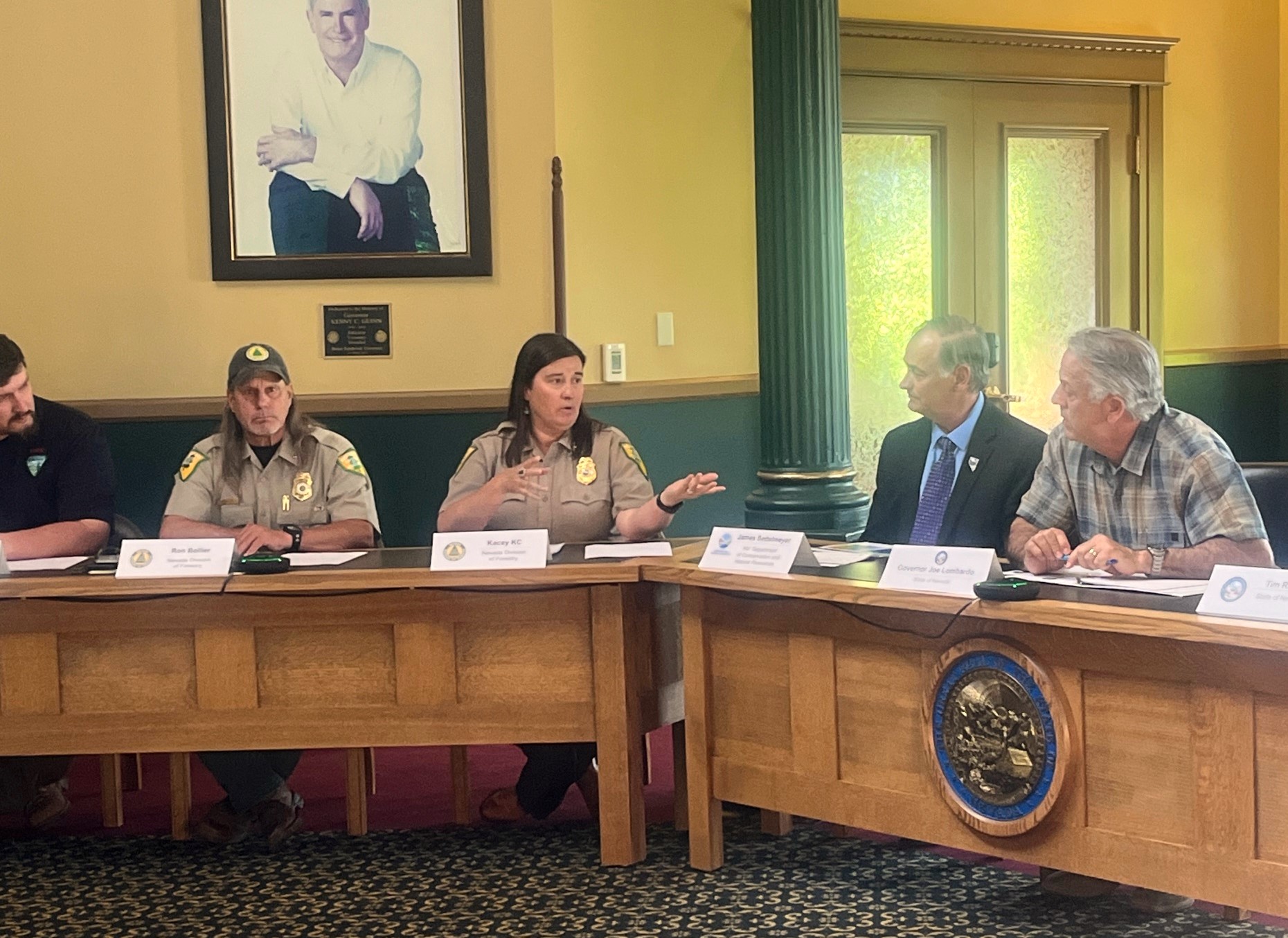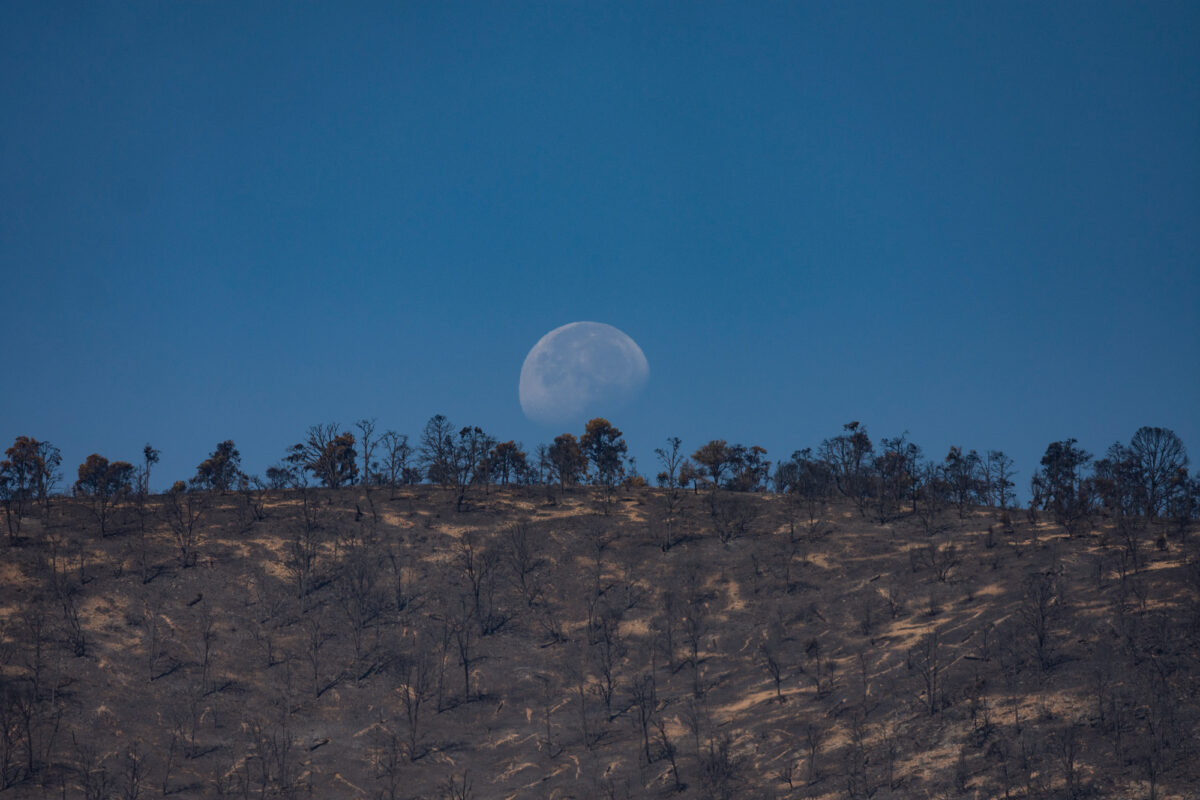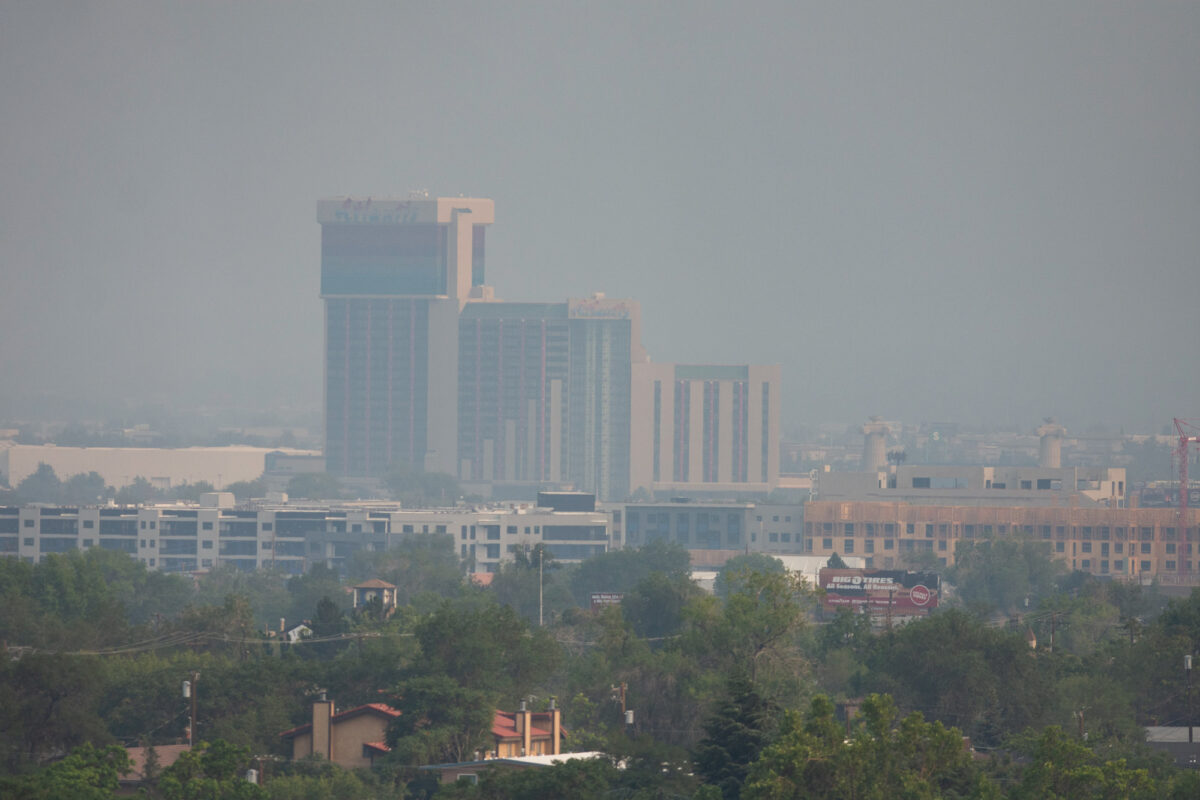Indy Environment: Nevada officials seek less red tape to bring in help to fight wildfires

Good morning, and welcome to the Indy Environment newsletter. I'm Amy Alonzo, the environment reporter for The Indy.
With the wildfire season fast approaching, the last few weeks have been a flurry of briefings and webinars by climatologists, meteorologists and state and federal fire officials discussing the coming fire season.
Nobody knows for sure what will happen or how much will burn, but that doesn’t keep officials and forecasters from trying to guess. Because, just like being on the front lines of a fire, being forward-thinking is better than being caught off guard.
As always, we want to hear from readers. Let us know what you’re seeing on the ground and how policies are affecting you. Email tips to me at [email protected].
To get this newsletter in your inbox, subscribe here.

When it comes to interstate wildfire compacts, Nevada has historically been the odd man out.
In the 1950s, Congress granted a handful of Southeastern states authority to create an interstate wildfire compact, letting them more easily transfer firefighting resources across state lines during emergencies.
Since then, states and various Canadian territories and provinces have clustered together to form eight firefighting compacts across North America. All but a handful of states opted to join.
One of those that never opted in? Nevada.
Now, with the state’s wildfire season growing longer and more intense, Nevada Division of Forestry officials would like to enter a compact — but officials are unclear on how to legally do that.
“We are wanting to join and don’t really know how,” Kacey KC, Nevada state forester and fire warden, told state lawmakers during a May meeting of the Interim Committee on Natural Resources.
Joining an interstate compact would be another tool in the state’s wildfire fighting toolkit, she said, important ahead of a summer that has officials across state and federal agencies worried about what two consecutive years of above average precipitation could mean for flammable fuels in Nevada.
Nevada’s 2022 and 2023 wildfire seasons were minimal — just 1,300 acres burned last year, the fewest acres in the state’s recorded history and a substantial decrease from the state’s average of 450,000 acres burned. But after two wet years, grasses are greening up across the state and lowland fires could be a real threat, according to models and fire experts.
Joining a compact could help the state address those fires more quickly, KC said.
“If we were able to join the compacts, we would be able to move [from] state to state and bring resources in faster,” she told lawmakers. “The web of agreements that’s necessary to mobilize assets into our state and out of our state is astronomical.”
The difference between a small fire and a large fire
Written history behind the formation of existing interstate wildfire compacts is hard to find.
But in August 1953, Congress authorized Arkansas, Louisiana, Mississippi, Oklahoma and Texas to enter into a wildfire compact to share resources, just one month after the Rattlesnake Fire in California’s Mendocino County killed 15 firefighters.
Other states and Canadian provinces and territories followed suit, forming regional compacts of their own. Now, eight wildfire compacts across the United States and Canada allow participating states and provinces the ability to share information, technology, personnel and resources.
But a handful of states with vast amounts of federal land — California, Arizona, Nevada, Hawaii and Utah — never joined. Nevada instead relies on contracts with individual states, but drafting separate contracts with each state creates additional bureaucratic red tape, KC said.
The reason Nevada never joined a compact is not well documented.
Genie MontBlanc, Great Basin Fire Science Exchanger coordinator at UNR, postulates that the state didn’t join a compact because so much of Nevada’s land is federally owned, so most firefighting resources were taken care of by the Forest Service and Bureau of Land Management.
“We didn’t need interstate resources until wildfires became such a problem,” MontBlanc told The Nevada Independent. “In the past, since Nevada’s mostly shrubland, it wasn’t very important to our state. But now there’s way more rangeland fires … It would behoove us to join a compact.”
The number of acres burned in Nevada has more than doubled during the past few decades. Between 1980 and 1999, 4.2 million acres burned; from 2000 to 2018, 9.5 million acres burned.
As more acres burn in the West and fires become more deadly, states that originally opted out of interstate compacts are now reconsidering.
In the wake of the 2023 wildfire in Maui’s Lahaina area, Hawaii joined the Northwest Compact in April of this year. Earlier this month, Arizona joined the Great Plains Compact.
And while Nevada is still supported by federal resources and has compacts with several individual states, pulling in resources during an emergency can be a complicated process due to the myriad individual state compacts, KC told lawmakers in May. If Nevada was part of an interstate compact, she said, it would substantially reduce the number of individual agreements needed.
Moving resources quickly between state lines is “the difference between a small fire and a large fire, homes and lives,” she said.
The Silver State would like to join the Great Plains Compact, currently composed of Colorado, Kansas, Nebraska, New Mexico, North Dakota, Saskatchewan, South Dakota, Wyoming and, as of last week, Arizona.
But KC said she is unclear whether she has the authority to initiate that process herself or if she needs a bill to move through the Legislature, which isn’t scheduled to meet again until 2025. If legislation is needed, she will start looking for a bill sponsor, but it means the 2024 fire season will again be marked by the set of complicated agreements between Nevada and individual states.
If, under state law, she has the authority to make that decision, she will immediately draft a letter, she told The Nevada Independent.
“We’re a little nervous. This could be a bigger year for us,” KC told Gov. Joe Lombardo during a recent wildfire briefing at the capitol.
Days with windy, dry conditions increasing across Nevada
Historically, Nevada’s largest wildfires have burned not when the state was in extreme drought, but when the state experienced high grass growth following a wet winter or two — a situation Nevada is facing this summer. While wildfires at tree-covered, higher elevations will be delayed, grassy areas at lower elevations are going to be a high concern, Brock Uhlig, state fire management officer for BLM Nevada, told the governor during the briefing at the capitol.
Across much of the state, fire danger will be above average starting in June and continue increasing through July and August.
“We will definitely be seeing more [fire activity] than we did in the last two years,” Edan Lindaman, a meteorologist with the National Weather Service, said at a recent regional drought and climate webinar. “The problem arises when fuels are really dry, and we get those windy and dry conditions.”
And the number of those days in Nevada are increasing, according to Climate Central, a nonprofit news organization that analyzed the average number of fire weather days across 245 regions nationwide and looked at how conditions at those sites have changed during the past 50 years.
Climate Central found that, on average, Southern and south central Nevada experience the most fire weather per year of anywhere in the nation, with roughly 100 days of high-risk fire weather. The number of high-risk fire weather days in south central Nevada has more than doubled since 1973.
Northwestern and northeastern Nevada average 55 and 56 days, respectively, of fire weather annually.
While hot, dry, windy days don’t guarantee a fire, the “fire weather” measurement acts as a “threat multiplier,” according to Climate Central, increasing the chances that should a fire break out, the fire will be much more dangerous and destructive than in more ideal conditions.
And models are showing those hot, gusty winds could be more of a problem this year in Nevada.
The National Interagency Fire Center’s Predictive Services is forecasting more fire starts from gusty and dry winds than lightning, as well as a delayed and weaker than normal summer monsoon season.

Here’s what else I’m reading (and listening to) this week:
The state will need to allocate more money to its Voluntary Water Rights Retirement Program to keep pace with the number of Nevadans interested in selling their water rights back to the state, per the Nevada Current.
Grist tells the story of how a California oil town is pivoting to keep up with the clean energy transition.
For the second straight year and the fourth in California’s history, no salmon fishing will be permitted in the state’s waterways as populations continue to decline. More from the Los Angeles Times.
A fun listen from KUNR that explains what you might hear when hiking around the Lake Tahoe and Mt. Rose areas.
